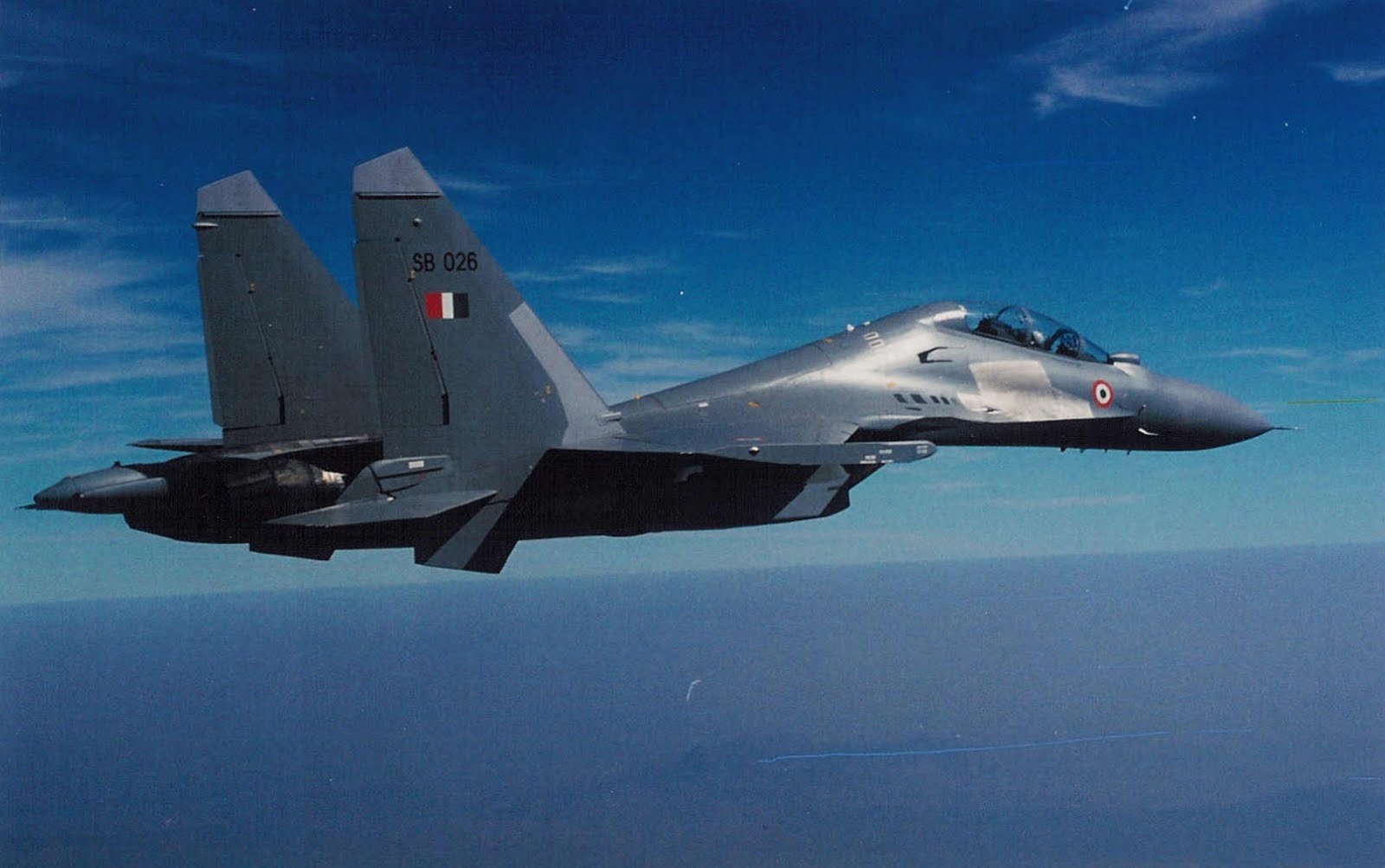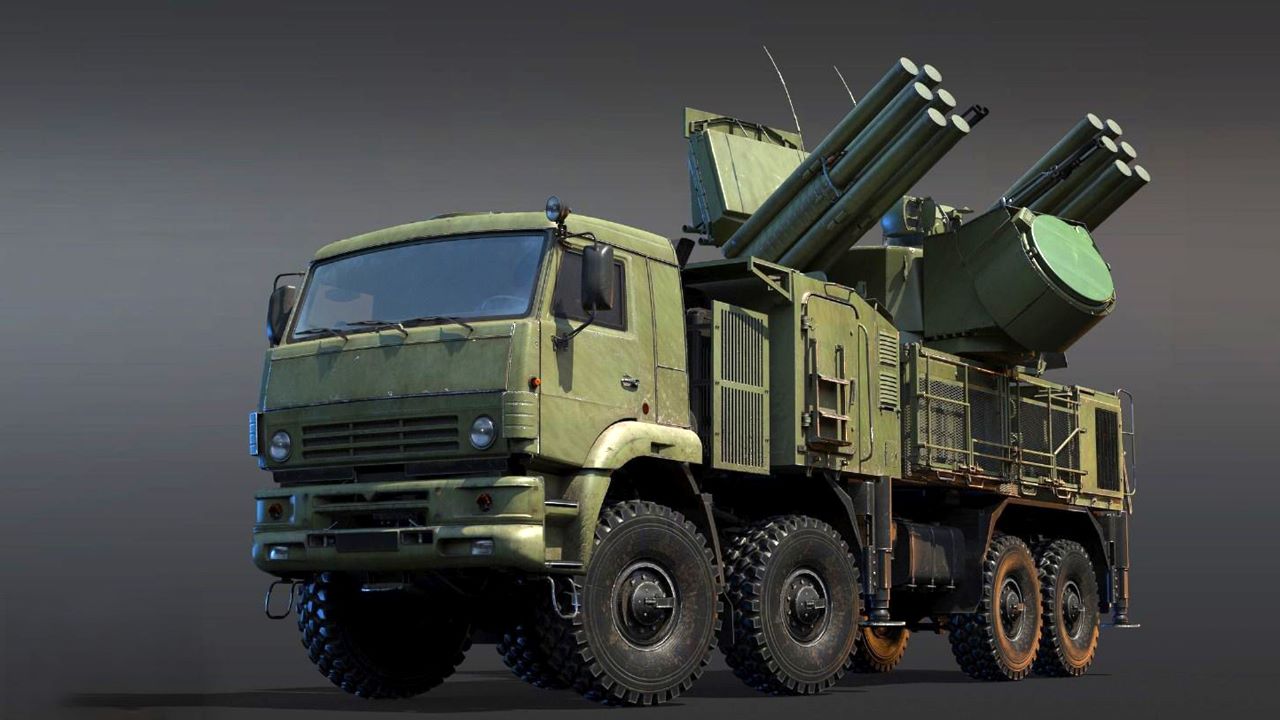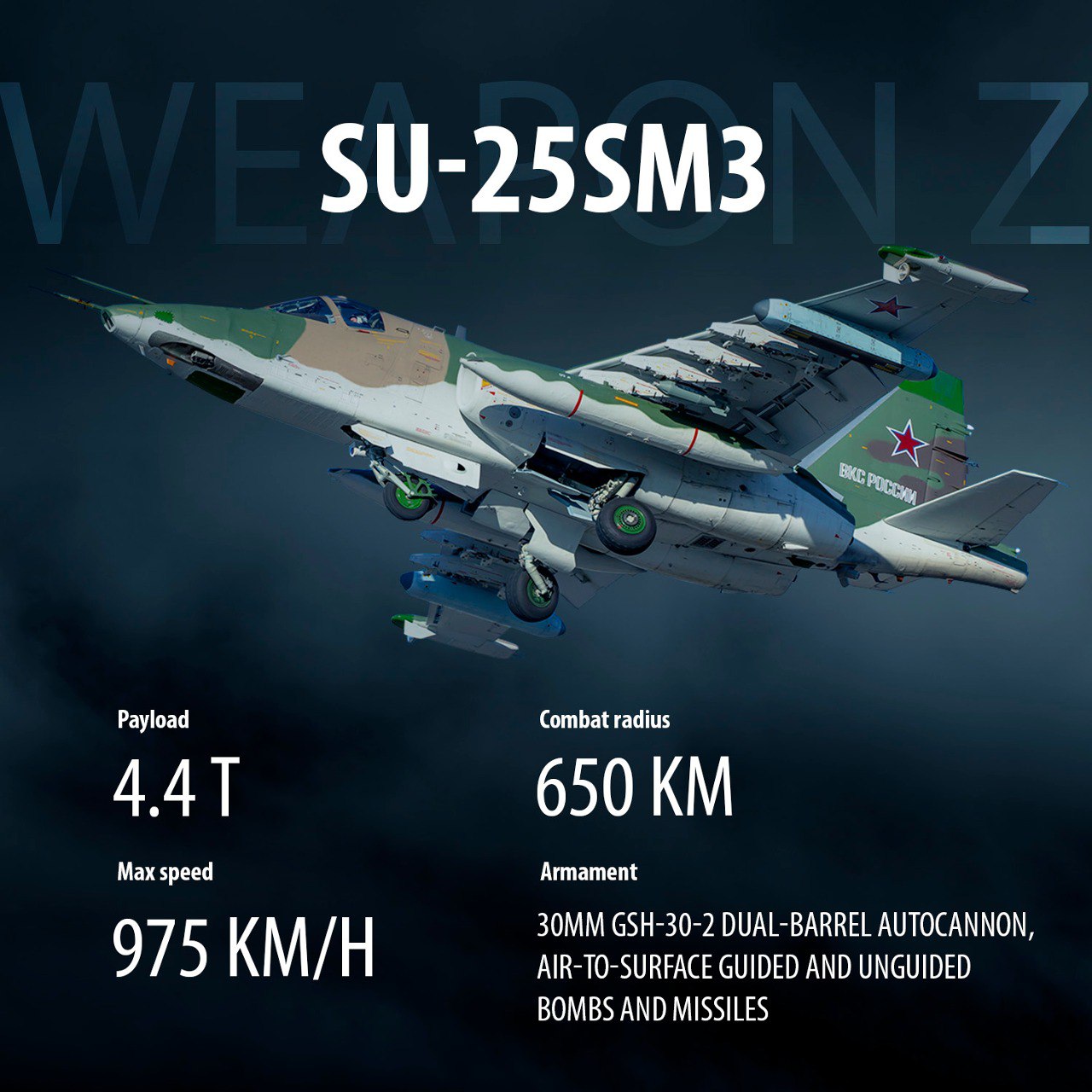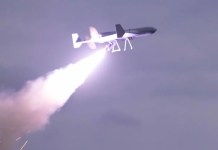The conflict in Ukraine has revealed serious shortcomings in planning, percepts, weapon systems, and tactics associated with aerial warfare in a peer-to-peer conflict. Most likely, the shortcomings are attributable to the world’s focus exclusively on asymmetric warfare for many decades.
Shortly after the Ukrainian conflict started, both Ukraine and Russia felt afflicted by shortcomings that surfaced from the adversary’s unique use of technological advances.
In asymmetric warfare, only the dominant power unleashes advances in battlefield technology. In a peer-to-peer conflict, both have the prerogative to do so! Not surprisingly, surprise and disappointment dominated the course of the battle.
The Armed Forces of Ukraine (AFU), for example, overestimated the potential of armed drones such as the Turkish Bayraktar TB2 and grossly underestimated the effectiveness of multi-layered air defense (AD) systems doctrinally deployed by Russian forces to asymmetrically counter the technological advantage of Western fighter jets and cruise missiles.
The Russian Aerospace Force (RuAF), on its part, didn’t sufficiently appreciate the need for a large number of AWACS aircraft to undertake air dominance and SEAD patrols safely. The RuAF’s reliance on unguided bombs during the initial part of the campaign was almost embarrassing.
Both Ukraine and Russia entered the war without full appreciation of the potential of drone-based reconnaissance and attack,
In the following paragraphs, I will list and discuss some important lessons from the war in Ukraine, lessons that are likely to impact the future of air warfare.
Some of the lessons validate concepts and percepts that the Indian Air Force has already adopted. Others may well give the IAF leadership cause to pause and ponder. Wherever relevant, I will provide context.
Modern AD Systems Rule Out Theater-Wide Air Superiority
The concept of air superiority implies complete control over the skies within a specific theatre of conflict. Having established air superiority, the dominating air force can operate with relative freedom, while enemy air operations are severely limited, if not entirely suppressed.
The versatility and effectiveness of modern AD systems make air superiority over the entire adversarial airspace impossible to achieve.
The long reach of advanced AD systems, such as the Patriot and the S-300, and the ability of shorter-range modern systems, such as NASAMS and Pantsir, to operate in ‘dark’ mode rule out theaterwide air superiority. When operating ‘dark,’ an AD system keeps its search radar off to prevent an attack by an adversary fighter equipped for a SEAD mission armed with an anti-radar missile (ARM).
Instead of using its own radar to track targets, the dark AD system tracks targets using data streamed over a data link from an altogether different radar (usually an airborne AWACS). As soon as a target comes within missile range, the dark system lights up its missile guidance radar and launches its missile.
As such, no amount of SEAD effort can ensure that the dominating force can operate freely.
Modern Air Defence Dramatically Reduces Air Power Effectiveness
The effectiveness of modern AD systems forces attacking fighters and bombers to launch their bombs and missiles from standoff ranges to ensure their own safety.
The ammunition used for standoff attacks (cruise missiles, glide bombs, etc.) is considerably more expensive than unguided ammunition (rockets, bombs) for close-range attacks.
Equally important, the warhead size of long-range guided ammunition is significantly smaller, resulting in less destructive power. The lower speed of the guided ammunition also results in less destruction.
The cost differential can be considerable when hardened targets need to be attacked. Not only is each guided ammunition more expensive, you need larger numbers to destroy a given target.
In short, long-range use of air power is less effective.
No Role For Armed Drones In Peer-To-Peer Aerial Warfare
As Ukraine found out soon after its battlefront stabilized in October 2022, medium-sized armed drones are easily shot out of the sky if deployed in heavily contested airspace.
Ukraine, which was so upbeat over its Turkish Bayraktar TB-2 armed drones at the beginning of the war, now uses them only to perform reconnaissance along lightly contested areas of the battlefront.
India’s intent to invest heavily in US Predator drones is difficult to comprehend in this context. India has two peer adversaries and no hegemonic ambitions. In case of hostilities, the survival time of a Predator deployed along India’s borders with China or Pakistan would be very limited.
Need For Long-Range Air-To-Air Missiles
The supply of modern US and NATO AD systems to Ukraine made it impossible for Russia to establish air superiority over any significant part of Ukrainian air space. The best Russia could do was establish air superiority over a strip of Ukrainian airspace running 100 kilometers deep into Ukraine along the 1000-kilometer-long battlefront.
Russia established air superiority over the limited swath of Ukrainian territory by deploying its S-300 and S-400 long-range IADS (Integrated Air Defence Systems) in proximity to the battlefront and through 24×7 patrolling by Russian Su-35S and Su-30SM fighters.

The Russian fighters are armed with multiple types of air-to-air missiles to shoot down any Ukrainian aircraft below and a single Anti Radiation Missile (ARM) to destroy any AD radar that lights up.
Russian attack helicopters, such as the Ka-52 and Mi-28, and Su-25 fighters, freely operate in Russian-controlled airspace.
The depth to which patrolling Russian fighters can establish air superiority is derived from the range of the RVV-BD air-to-air missile, which, launched from a height, can reportedly strike targets up to 300 kilometers away!
Long-range air-to-air missiles and ARMs are today critical for establishing air superiority over a limited swath of adversary territory. The longer the range of the missile, the larger will be the no-fly zone imposed.
Based on open-source information, the IAF does not have a truly long-range air-to-air missile such as the RVV-BD. Also, its stock of long-range ARMs is likely limited.
Increased Requirement For SEAD Missions
SEAD missions by fighter aircraft, cruise, or ballistic missiles are essential for establishing air superiority. However, mobility and dark mode operations make it difficult to ferret out and destroy adversary AD systems deployed in a theatre.
Future wars will mandate a much larger allocation of resources for SEAD missions than is the current norm.
Need For Multi-Layered Air Defense
The Ukraine war has demonstrated the efficacy of multilayered mobile air defense systems in thwarting attacks by ballistic missiles, cruise missiles, all types of aerodynamic targets, artillery rockets, and shells.
Multiple AD layers are more difficult to penetrate than a single layer. For example, attacking fighters and cruise missiles can fly low to evade detection by long-range systems. In the vicinity of medium-range systems, they can use terrain masking to evade detection or reduce detection range.
However, to strike a target protected by layered AD systems, they would still have to face point defense or VHORAD (Very Short Range Air Defence) systems.
AD systems can use different types of seekers to track and destroy their targets – optical, IIR (Imaging InfraRed), radar, SALH (Semi-Active Laser Homing), and SARH (Semi-Active Radar Homing).
Deploying missile systems with different types of seekers is more effective in preventing missiles from penetrating the AD cover of a target than a single type of missile system.
The IAF has acquired different types of AD systems that could effectively provide a layered defense. Whether or not the number of systems acquired is sufficient and their networking is adequate is moot.
However, India is now self-sufficient in missile technology, and it’s just a matter of time before any gap is filled using indigenously developed AD missile systems.
Need For Adaptive Air Defense
Modern AD systems use software algorithms to identify their targets and optimize their interception strategy based on the target type. Sometimes, through espionage or as a result of weapon system capture, the adversary can decode the interception algorithms and counter them with flight characteristic changes. In such a case, improving or changing interception algorithms should be possible.

Russia’s ability to alter the interception algorithms of its Buk and Pantsir AD systems in order to improve interception rates of HIMARS, HARM, and Storm Shadow missiles helped reduce the adverse impact of the supply of these weapons systems by the West to Ukraine.
In this context, it’s important for the IAF to acquire the ability to augment the interception algorithms of its AD systems.
Invulnerability Of Hypersonic Missiles
Russia’s very successful use of hypersonic missiles has proven that no AD system in the world today can intercept a hypersonic ballistic missile such as the Kinzhal. Whenever Russia wants to destroy a target with absolute certainty, it uses a Kinzhal hypersonic missile or Iskander-M.
Most ballistic missiles are hypersonic during the end game, but they cannot maneuver. As a result, their trajectory is predictable, and interception is easy. Kinzhal and Avangrad can cruise and maneuver at hypersonic speeds, making interception impossible with current tech.
Based on the physics behind hypersonic target interception, it’s likely that the capability of hypersonic missiles to penetrate all air defense systems will remain unchallenged for decades.
Besides the ability to penetrate AD systems, hypersonic missiles pack a wallop when it comes to their destructive ability.
India has non-nuclear maneuvering hypersonic ballistic missiles, but their deployment status and numbers are unknown.
Near Invulnerability Of High Supersonic Speed Missiles
When it comes to penetrating air defenses and destructive power, high supersonic speed missiles, such as the Russian Onyx, are a close second to hypersonic missiles.
Their ability to fly unpredictable profiles and high terminal speeds make interception very difficult. Their high speed also gives them a lot of destructive energy.
India has very wisely invested heavily in the Brahmos missile, which as of now, is more destructive, penetrative, and versatile than the Onyx. India needs to reduce the cost of production of the Brahmos missile and enhance its manufacturing capability in order to ensure their easy availability during hostilities.
Need For Affordable Glide Bomb Kits
The Ukraine war has categorically proven that affordable capability is much more useful and effective than better capability when it comes to precision-guided munition.
For example, the US supply of JADAM-ER glide bomb kits to Ukraine had a much lower impact on the course of the war than the Russian introduction of crude and less accurate UPMC glide bomb kits. Russia’s use of FAB-500M62 glide bombs has been pivotal in bringing the Ukrainian counteroffensive to a halt well before it could truly get started.
The IAF has invested in Israeli SPICE (Smart, Precise Impact, Cost-Effective) glide bombs, but despite what their acronym suggests, they are not cost-effective, at least not enough for large-scale use.
DRDO is developing kits that will give existing IAF 100 kg, 250 kg, and 500 kg bombs precision guidance and glide capability, allowing them to be dropped from a height at stand-off ranges. However, the operational status and affordability of these kits are not available in open source.
Goodbye, Close Air Support
Close air support (CAS) was once an important role assigned to every air force. The proliferation of MANPAD cast serious doubts on the cost-effectiveness of CAS missions.

In this context, it’s interesting to note that Russia is currently using the Su-25, which was conceived as a dedicated CAS fighter, only for low-level area attacks using long-range unguided rockets, not for CAS.
The Ukrainian war has categorically proven that CAS is best undertaken using FPV and kamikaze drones operated by specialized technical manpower assigned to forward formations.
CAS support entailing strikes on targets deeper in enemy territory is best handled by attack helicopters armed with long-range precision-guided missiles. The attack helicopters operate out of enemy MANPAD range, flying in a zone with total air superiority.
The IAF, which decades ago made a doctrinal shift from fielding specialized CAS fighters to using precision-guided munition from medium altitude for CAS operation, showed great foresight. However, the limited inventory of affordable PGMs in the IAF inventory is a cause for concern.
Conclusion
In conclusion, it can be stated that in many ways, air power concepts relevant to a peer-to-peer confrontation have gone adrift over the years, much like a gyroscope that had not been ‘fixed’ for a long time.
Cynically speaking, the Indian Air Force must consider itself lucky that Ukraine and Russia are engaged in a conflict because there has been no fully blown peer-to-peer conflict since the Indo-Pak war of 1971.
As a result, air warfare concepts had not been fixed for a long, long time. Hopefully, Indian defense planners will draw the correct lessons and make amends wherever needed.
- Vijainder K Thakur is a retired IAF Jaguar pilot. He is also an author, software architect, entrepreneur, and military analyst. VIEWS PERSONAL
- Follow the author @vkthakur




